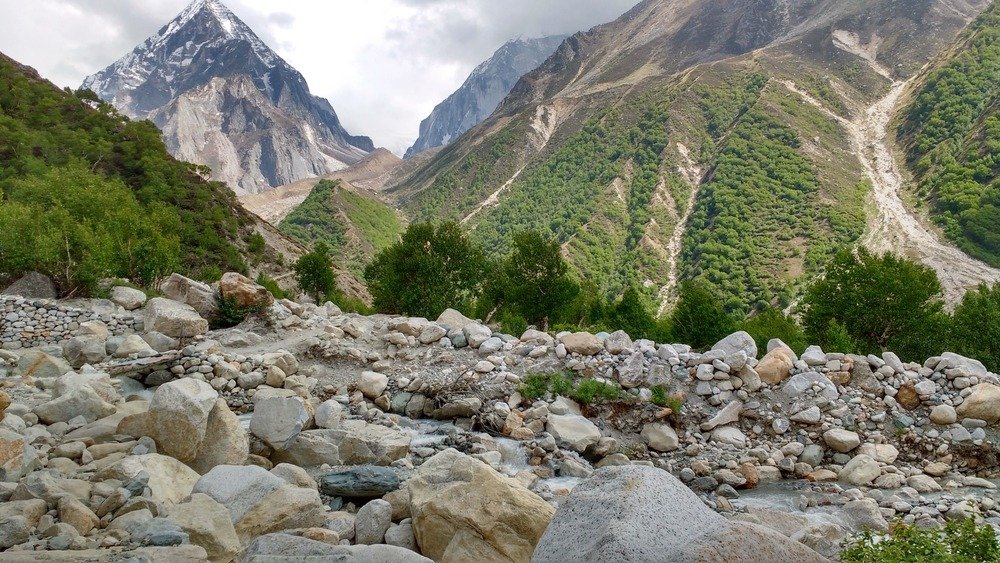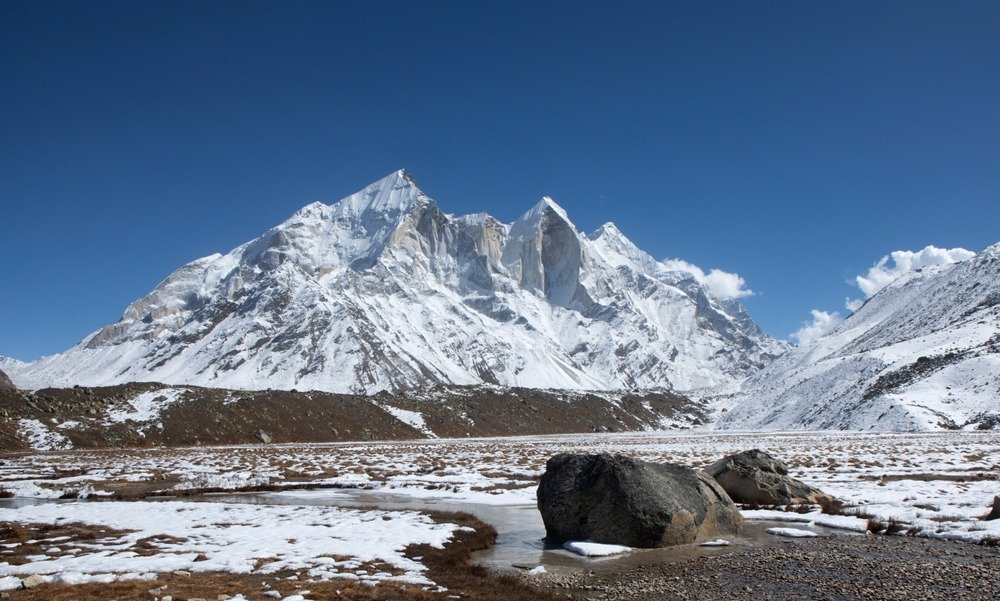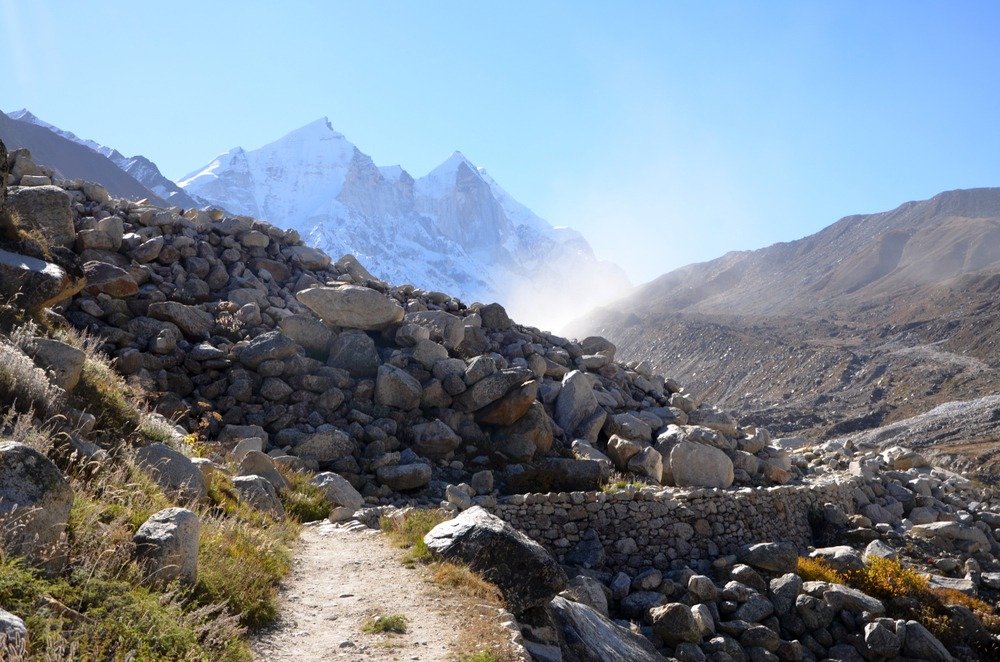1. Introduction to Gaumukh Trek
Get ready to be swept off your feet by the sheer beauty of the Gaumukh Trek! This adventure promises to take you on a journey like no other, where every turn reveals a new wonder waiting to be discovered.
The Gaumukh Trek is not just about conquering mountains; it’s about immersing yourself in the untamed wilderness of the Himalayas. From the moment you set foot on the trail to the awe-inspiring sight of the Gaumukh Glacier, every step of this journey is a testament to the raw beauty of nature.
As you embark on this Himalayan odyssey, prepare to leave behind the hustle and bustle of everyday life and embrace the serenity of the mountains. Whether you’re an experienced trekker or a novice explorer, the Gaumukh Trek offers an experience that will stay with you long after you’ve returned home.
2. Preparing for the Adventure Of Gaumukh Trek

Gear up, adventurers! Before we set off, let’s make sure we’re fully equipped to tackle the challenges that lie ahead. From sturdy boots to lightweight backpacks, every item on our packing list plays a crucial role in ensuring a smooth and enjoyable trek.
First and foremost, it’s essential to assess your physical fitness level and make any necessary preparations to ensure you’re ready for the demands of the trek. Regular exercise, including cardio and strength training, can help build endurance and stamina for the journey ahead.
Next, let’s talk gear. Invest in a good pair of hiking boots with ankle support to prevent injuries on rugged terrain. Lightweight, moisture-wicking clothing is essential to keep you comfortable and dry, while layers are key for adapting to changing weather conditions.
Don’t forget to pack essentials like a first aid kit, sunscreen, insect repellent, and a reliable navigation device. And of course, plenty of snacks and water to keep you fueled and hydrated throughout the trek.
Lastly, familiarize yourself with the route and potential hazards along the way. Research the trail, check weather forecasts, and heed any warnings or advisories from local authorities. Preparation is key to a safe and enjoyable trekking experience!
3. Route Overview Of Gaumukh Trek

Hold on tight as we traverse through some of the most breathtaking landscapes the Himalayas have to offer. From lush forests to towering peaks, the Gaumukh Trek is a visual feast for the senses that will leave you awe-struck at every turn.
The trek typically begins from Gangotri, a small town nestled in the Garhwal Himalayas and a popular pilgrimage site for Hindus. From there, we’ll embark on a multi-day journey through the Gangotri National Park, home to diverse flora and fauna.
The trail winds its way along the Bhagirathi River, offering stunning views of the surrounding mountains and valleys. As we ascend, we’ll pass through quaint villages, verdant meadows, and dense forests teeming with life.
One of the highlights of the trek is Chirbasa, a scenic campsite nestled amidst pine trees and offering panoramic views of the Bhagirathi peaks. From there, we’ll continue our ascent, passing through the enchanting landscape of Bhojbasa before reaching our ultimate destination: Gaumukh Glacier.
4. Enchanting Highlights
Prepare to be captivated by the myriad wonders that adorn the path to Gaumukh. From cascading waterfalls to panoramic vistas, each highlight along the way is a snapshot of nature’s unparalleled beauty.
One of the first highlights you’ll encounter on the trek is the towering peaks of the Bhagirathi sisters, named after the sacred river they overlook. These majestic mountains provide a stunning backdrop as we make our way towards the glacier.
As we ascend further into the mountains, keep an eye out for the stunning vistas that unfold before you. From panoramic views of the Gangotri Glacier to the serene beauty of the Tapovan meadows, every moment is a feast for the eyes.
But perhaps the most enchanting highlight of all is the Gaumukh Glacier itself. As you stand before this towering wall of ice, you can’t help but feel humbled by the sheer magnitude of nature’s power. The sight of the Ganges River flowing from the glacier’s mouth is a sight you won’t soon forget.
If you’re looking for a reliable company to guide you on your Gaumukh Trek adventure, allow me to recommend “The Searching Souls.” This esteemed company has years of experience in organizing treks and expeditions in the Himalayas, including the Gaumukh Trek.
With a team of seasoned guides and support staff, The Searching Souls. ensures that your trek is not only safe and enjoyable but also enriching and memorable. They prioritize safety and sustainability while providing personalized service to meet the needs of every adventurer.
5. Camping Essentials For Gaumukh Trek
As the sun sets behind the mountains, we’ll be setting up camp under the starlit sky. But before we cozy up in our sleeping bags, let’s make sure we’ve packed all the essentials for a comfortable night amidst nature’s embrace.
Choosing the right campsite is crucial for a restful night’s sleep. Look for a flat, level spot away from water sources and potential hazards like falling rocks or dead trees. Once you’ve found the perfect spot, it’s time to set up camp!
A good-quality tent is your first line of defense against the elements. Look for a lightweight, weatherproof tent that can withstand wind and rain while providing adequate ventilation for a comfortable night’s sleep.
Next, invest in a warm sleeping bag rated for the temperatures you’ll encounter on the trek. Layering is key for staying warm at night, so be sure to pack thermal clothing, a hat, gloves, and extra socks to keep the chill at bay.
Don’t forget to pack a portable stove and fuel for cooking hot meals and boiling water. High-energy snacks like nuts, dried fruit, and energy bars are perfect for fueling up on the go, while instant noodles or dehydrated meals make for quick and easy dinners after a long day on the trail.
Lastly, be sure to pack a reliable headlamp or flashlight for navigating camp at night, as well as a basic first aid kit for treating any minor injuries or ailments that may arise.
6. Safety First
Adventure awaits, but safety always comes first! From staying hydrated to knowing our limits, let’s take every precaution to ensure a safe and enjoyable trekking experience for all.
Altitude sickness is a real concern when trekking in the Himalayas, so it’s essential to acclimatize properly and listen to your body. Take it slow, stay hydrated, and pay attention to any symptoms of altitude sickness, such as headache, nausea, or dizziness.
The weather in the mountains can be unpredictable, so prepare for rapid fluctuations in temperature, wind, and precipitation. Dress in layers and carry waterproof clothing to stay dry and comfortable in any conditions.
When crossing streams or traversing rocky terrain, use caution and take your time to avoid accidents or injuries. And always stay on marked trails to minimize the risk of getting lost or encountering hazardous terrain.
Lastly, be respectful of the environment and wildlife around you. Avoid littering, stick to designated campsites, and refrain from feeding or approaching wild animals. By treading lightly and leaving no trace, we can help preserve the pristine beauty of the Himalayas for future generations to enjoy.
7. Gaumukh: Source of Serenity

As we approach the majestic Gaumukh Glacier, prepare to be swept away by its ethereal beauty and significance. This sacred site, where the Ganges River begins its journey, is a place of reverence and tranquility that touches the soul.
The name “Gaumukh” translates to “cow’s mouth” in Hindi, a reference to the glacier’s shape resembling the mouth of a cow. According to Hindu mythology, Gaumukh is the source of the Ganges River, which is believed to flow from the matted locks of Lord Shiva.
For centuries, pilgrims and seekers have journeyed to Gaumukh to pay homage to the sacred river and seek blessings for spiritual purification and enlightenment. The waters that flow from the glacier are considered pure and holy, with the power to cleanse sins and bestow blessings upon those who bathe in them.
Standing before the glacier, surrounded by the towering peaks of the Himalayas, it’s easy to see why Gaumukh holds such significance for devotees and adventurers alike. The sheer magnitude of the glacier and the serenity of the surrounding landscape create an atmosphere of awe and reverence that transcends words.
8. Discovering Flora and Fauna
Keep your eyes peeled as we journey through the Himalayan wilderness, for it is home to a diverse array of flora and fauna. From elusive wildlife to vibrant wildflowers, every encounter is a testament to the region’s rich biodiversity.
The Gangotri National Park, through which the Gaumukh Trek passes, is a designated UNESCO World Heritage Site and a haven for wildlife enthusiasts. Here, you may encounter a variety of animals, including Himalayan tahr, snow leopards, musk deer, and langur monkeys.
The park is also home to a wide range of bird species, from majestic birds of prey like the golden eagle to colorful songbirds like the Himalayan monal. Keep your binoculars handy and your eyes peeled for sightings of these elusive creatures as you trek through the wilderness.
In addition to its diverse fauna, the Himalayas are also home to a rich tapestry of flora, with thousands of plant species found nowhere else on Earth. From towering rhododendron forests to delicate alpine flowers, the landscape is alive with color and beauty at every turn.
9. Gaumukh Trek: A Spiritual Sojourn

Beyond the physical challenges, the Gaumukh Trek offers a journey of introspection and self-discovery. Amidst the serenity of the mountains, we’ll find moments of peace and clarity that will stay with us long after the trek is over.
There’s something inherently spiritual about being in the presence of such majestic beauty. As we trek through the Himalayas, surrounded by towering peaks and pristine wilderness, we can’t help but feel a sense of awe and wonder at the sheer magnitude of the natural world.
For many, the Gaumukh Trek is not just a physical journey, but a spiritual one as well. It’s a chance to disconnect from the distractions of modern life and reconnect with something greater than ourselves – whether that’s nature, the divine, or simply our own innermost selves.
As we traverse the rugged terrain and gaze upon the awe-inspiring sights of the Himalayas, we’ll find moments of clarity and insight that can only be found in the quietude of the mountains. Whether it’s a silent meditation at sunrise or a moment of gratitude as we gaze upon the glacier, the Gaumukh Trek offers countless opportunities for spiritual growth and renewal.
10. Conclusion
As our adventure comes to an end, let’s take a moment to reflect on the memories we’ve made and the bonds we’ve forged along the way. The Gaumukh Trek may be over, but the spirit of adventure lives on within us, urging us to seek out new horizons and explore the unknown.
From the rugged beauty of the Himalayas to the serenity of the Gaumukh Glacier, every moment of this journey has been a testament to the indomitable spirit of nature. As we bid farewell to the mountains and return to the world below, let’s carry with us the lessons we’ve learned and the memories we’ve made, knowing that the call of the wild will always draw us back.
FAQs (Frequently Asked Questions)
1. Is the Gaumukh Trek suitable for beginners?
Absolutely! With proper preparation and guidance, beginners can embark on this adventure with confidence and conquer the challenges that lie ahead.
2. What is the best time to undertake the Gaumukh Trek?
The ideal time for the Gaumukh Trek is during the summer months, from May to June, and post-monsoon season, from September to October, when the weather is mild and the trails are relatively stable.
3. Are there any altitude-related risks associated with the trek?
Altitude sickness is a potential risk, especially as you ascend to higher altitudes. It’s essential to acclimatize properly, stay hydrated, and listen to your body to mitigate these risks.
4. Can I undertake the Gaumukh Trek solo?
While solo trekking is possible, it’s advisable to go with a knowledgeable guide or join a trekking group for added safety and support, especially if you’re unfamiliar with the terrain.
5. Are permits required for the Gaumukh Trek?
Yes, permits are necessary for trekking in the Gangotri National Park, which encompasses the Gaumukh Trek route. Be sure to obtain the required permits beforehand to avoid any last-minute hassles.
So, are you ready to embark on this epic adventure and create memories that will last a lifetime? The Gaumukh Trek awaits, beckoning you to explore its wonders and embrace the spirit of adventure!
Please Read About More Related Topics – What to Pack for a Successful Rupin Pass Trek Experience

